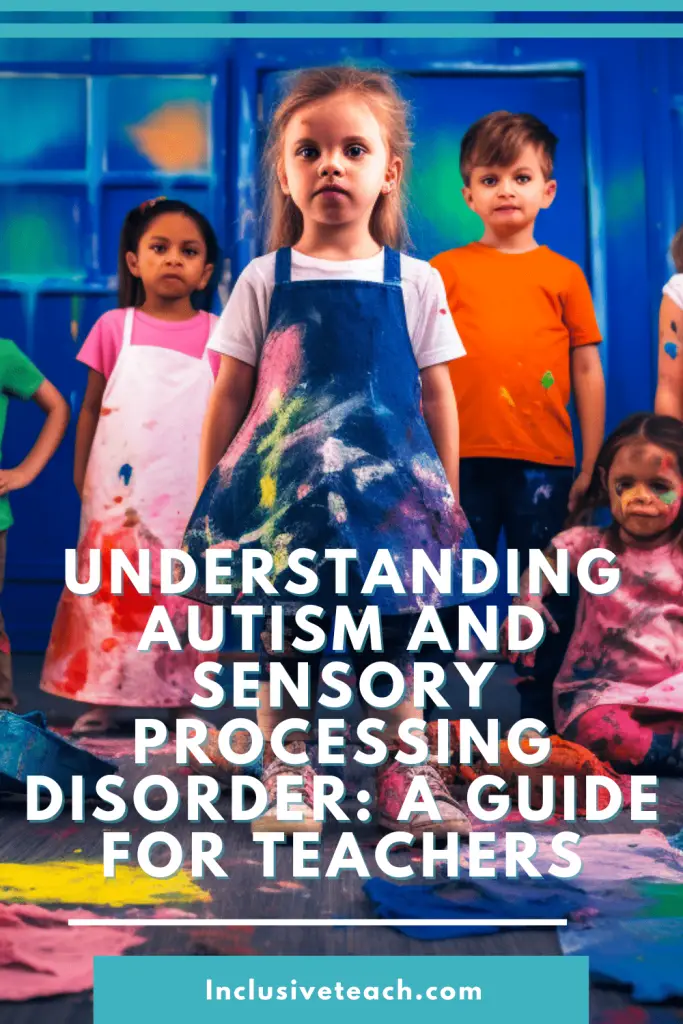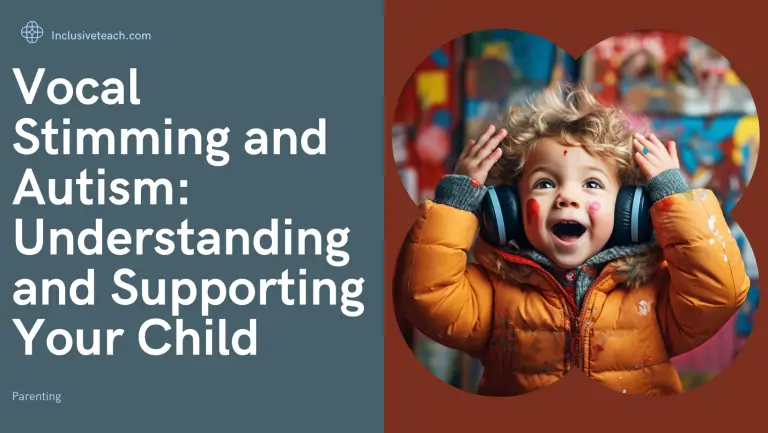Understanding Autism and Sensory Processing Disorder: A Guide for Teachers
Understanding Autism and Sensory Processing Disorder.
As a teacher, it is important to recognise that every child is unique. While there are certain commonalities in the needs of autistic individuals. Reactions to sensory stimuli can play a significant role in how engaged in learning a child will be. Reducing sensory overload can improve a child’s quality of life, and reduce the likelihood of “meltdowns” or “challenging behaviour“. In this post, we will explore sensory processing disorder, how it relates to autistic children in the classroom and the importance of understanding and taking a dimensional approach to SPD.

What is Sensory Processing Disorder?
Sensory processing disorder (SPD) occurs when an individual has difficulty processing and therefore responding to internal or external stimuli. When sensory information enters the brain, the interpretation of that information can result in motor, emotional, attentional, learned or adaptive responses. SPD occurs on a spectrum and is only considered a disorder when it significantly impacts daily routines and tasks. Everyone has some level of sensory processing sensitivities. Those with SPD will have more extreme reactions and responses. As a child in a system set up for the majority and led by adults, they may not have the control of these stimuli that we have as adults.
There are lots of good websites that explain more about SPD. This post will talk about the dimensional approach, sensory modalities and how this will influence your classroom practice. Cathcart and Ruttledge (2019) recommend that future improvements to sensory processing training for teachers should include support on how to involve children themselves in meeting their sensory needs. This may involve strategies such as providing children with choices of sensory activities or tools that they find helpful, encouraging them to communicate their sensory needs and preferences, and involving them in creating a sensory-friendly environment.
Sensory Modality Disorder and SPD
Sensory Modality Disorder (SMD) is a subtype of SPD and refers to an extreme inability to regulate responses to everyday sensory information to which most people easily acclimate. A sensory modality refers to a specific way in which sensory information is perceived or processed by the brain. There are several sensory modalities, including visual (related to sight), auditory (related to hearing), olfactory (related to smell), gustatory (related to taste), and somatosensory (related to touch and other bodily sensations). Each sensory modality involves different neural pathways and processing mechanisms in the brain. Understanding individual differences in sensory processing across different modalities is important for understanding how individuals with autism perceive and interact with the world around them (Taylor et al 2022).
A Dimensional Approach to Sensory Processing Disorder
The traditional categorical definition of autism and SPD is being replaced by a dimensional approach. Instead of thinking about these disorders as a binary “have it or not” situation, we should consider them as existing on a range. A great analogy that I have heard is the “Mixing desk” This is where each dial is turned to a different volume. Each individual is somewhere on a dimension of sensation, interrelatedness, communication, and more. This dimensional approach provides a better understanding of an individual’s needs and appropriate adaptations.
There are three major subtypes of SPD: modulation disorder, sensory-based motor disorder, and sensory discrimination disorder. Modulation disorder has three subtypes: sensory over-responsiveness, sensory under-responsiveness, and sensory craving. Sensory-based motor disorders include dyspraxia and postural disorders. Sensory discrimination disorder includes trouble interpreting information from one or more senses.
As a teacher, it can help to understand the different subtypes of SPD and how they can manifest in each child. Each child will have their own unique set of challenges and strengths. We can then start to plan for the adjustments we make to our classroom and approach. Stress from sensory input can be lessened, and reducing sensory reactivity can have a significant positive impact on a child’s quality of life and readiness to learn.
Understanding Sensory Processing in Autism: What You Need to Know in Your Classroom
What is the difference between SPD and Autism? This key information about the link between sensory processing and autism, each child will have a different profile and understanding their autism will help identify appropriate strategies to support them in your classroom:
- The neurotypical brain is (usually) able to choose and prioritise what it processes, whereas the autistic child may hear every sound or notice every sensory input. This can make the world feel overwhelming for some autistic people so how you design activities for cognitive load is even more important..
- Sensory processing difficulties can impact both gross and fine motor skills, as well as things like hair washing, teeth cleaning, and certain clothing such as uniforms or school shoes aversive. This can make simple independent tasks, such as putting a coat on for playtime much more challenging.
- Children with autism may be hyper-sensitive or hypo-sensitive to different types of sensory input. For example, they may dislike being tickled but enjoy deep pressure massages or sleeping with a weighted blanket. A common example is noise sensitivity.
- Some autistic children may be resistant to trying new foods or have specific food preferences based on colour or texture. This is not simply being a picky eater but can be a result of the negative associations that certain foods or textures have with sensory experiences. Often foods like fruit and veg have an element of unpredictability about them whereas biscuits and crisps tend to be the same every time.
- Autistic individuals may have a high pain threshold or be sensory-seeking, actively seeking out input that may feel like pain to others. This can also affect how common tasks like nail cutting are undertaken.
- Tactile sensitivity is a common characteristic of autism, with some individuals disliking particular textures, tags on clothing, or certain materials.
- Bright lights and fluorescent lighting can be extremely uncomfortable/distressing for people with autism, both in terms of light sensitivity and the associated buzzing sound.
Summary of Understanding Autism and Sensory Processing Disorder
Understanding autism and sensory processing disorders is essential for teachers working with children with these conditions. Each child is unique and has their own set of challenges and strengths. Making simple adaptations for SPD can significantly improve a child’s quality of life and ability to learn.

References:
Taylor, EC, Farmer, GD, Livingston, LA, Callan, MJ & Shah, P 2022, ‘Rethinking fast and slow processing in autism’, Journal of Psychopathology and Clinical Science, vol. 31, no. 4, pp. 392-406. https://doi.org/10.1037/abn0000734 Accessed Online April 2023
Cathcart, J., & Ruttledge, A. (2019). An evaluation of sensory processing training on the competence, confidence and practice of teachers working with children with autism. Irish Journal of Occupational Therapy. https://doi.org/10.1108/IJOT-01-2019-0001 Accessed Online May 2023
Crasta, J. E., Salzinger, E., Lin, M. H., Gavin, W. J., & Davies, P. L. 2020. Sensory Processing and Attention Profiles Among Children With Sensory Processing Disorders and Autism Spectrum Disorders. Frontiers in integrative neuroscience, 14, 22. https://doi.org/10.3389/fnint.2020.00022 Accessed Online April 2023






12 Comments